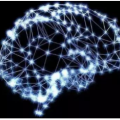During the COVID-19 pandemic, most of the human-to-human interactions have been stopped. To mitigate the spread of deadly coronavirus, many offices took the initiative so that the employees can work from home. But, tracking the employees and finding out if they are really performing what they were supposed to turn out to be a serious challenge for all the companies and organizations who are facilitating "Work From Home". To deal with the challenge effectively, we came up with a solution to track the employees with face recognition. We have been testing this system experimentally for our office. To train the face recognition module, we used FaceNet with KNN using the Labeled Faces in the Wild (LFW) dataset and achieved 97.8% accuracy. We integrated the trained model into our central system, where the employees log their time. In this paper, we discuss in brief the system we have been experimenting with and the pros and cons of the system.
翻译:在COVID-19大流行期间,大部分人与人之间的相互作用已经停止。为了减缓致命的冠状病毒的传播,许多办公室主动采取行动,使雇员能够在家里工作。但是,跟踪雇员并查明他们是否真正在完成他们本来应该完成的工作,这对于所有促进“从家做工”的公司和组织来说是一个严重挑战。为了有效地应对这一挑战,我们想出了一种办法,用面部识别来跟踪雇员。我们一直在为办公室试验这个系统。为了对脸部识别模块进行培训,我们用KNN和FaceNet用野生(LFW)数据集中的Labeled Faces实现了97.8%的精确度。我们把经过训练的模型纳入我们的中央系统,让雇员们在其中记录时间。我们在本文件中简要地讨论了我们一直在试验的系统以及该系统的利弊。




